Blockchain in healthcare

Blockchain technology has the potential to transform health care.
Currently, this technology assists healthcare providers in providing quality care to patients as well as improving the administrative management of healthcare facilities.
In the past couple of years, blockchain technology has sparked the interest of several stakeholders within the healthcare industry, many of whom have gone on to invest extensively in blockchain research.
The technology has numerous applications in healthcare, from decentralizing the management of health data to boosting its quality and security, reducing therapeutic errors, etc.
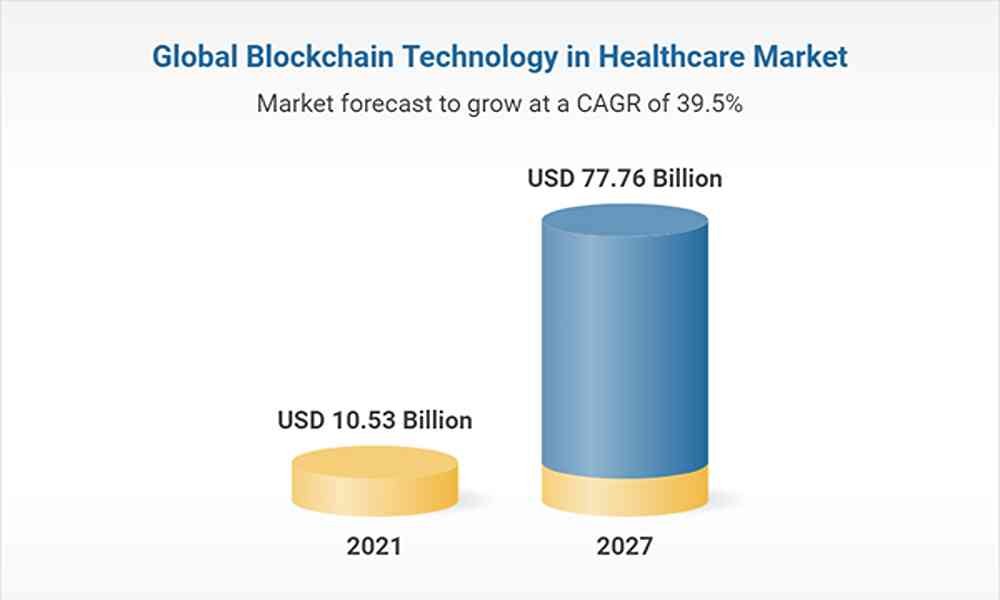
According to Research and Markets, the global blockchain technology in the healthcare market was estimated at USD 10.53 billion in 2021, USD 14.68 billion in 2022, and is projected to grow at a CAGR of 39.53% to reach USD 77.76 billion by 2027.
The growth of the blockchain market can be linked to several factors.
The need for efficient health data management systems and medical record interoperability, the demand to reduce drug counterfeiting across pharmaceutical supply chains, and the move to combat the surging cases of data breaches are among the major factors leading to the adoption of the technology in healthcare organizations.
Blockchain
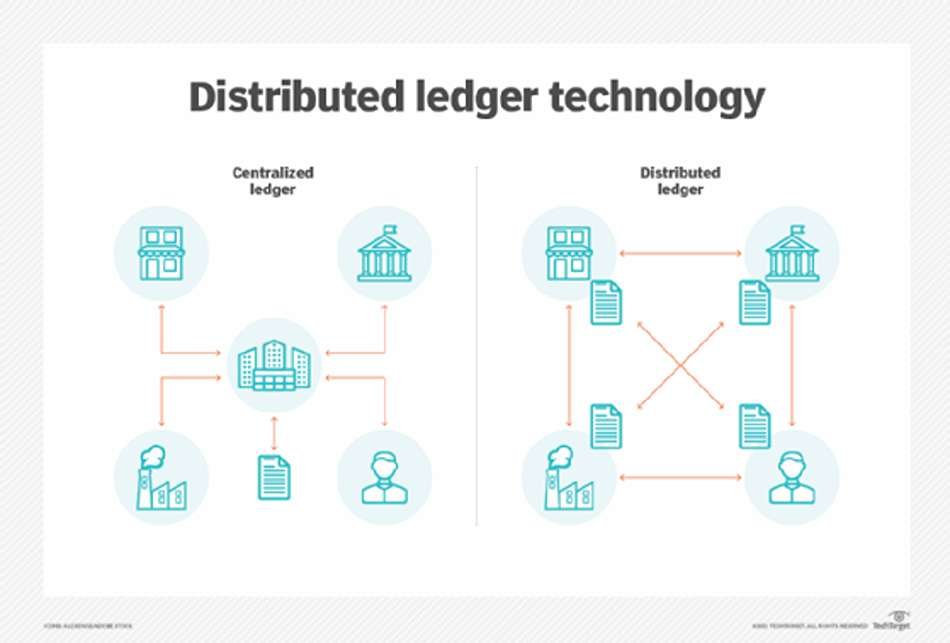
Blockchain technology is a distributed system that stores transactional data (known as blocks) in databases (known as chains) in a network connected through peer-to-peer computers (known as nodes).
This storage is termed a digital ledger.
This digital ledger can be likened to an Excel spreadsheet (block) shared among numerous computers (nodes) in a network (peer-to-peer network) where everyone in the network can see the content of the spreadsheet but cannot corrupt it.
Hence, blockchain is a distributed digital ledger.
Properties of distributed ledger technology (DLT)
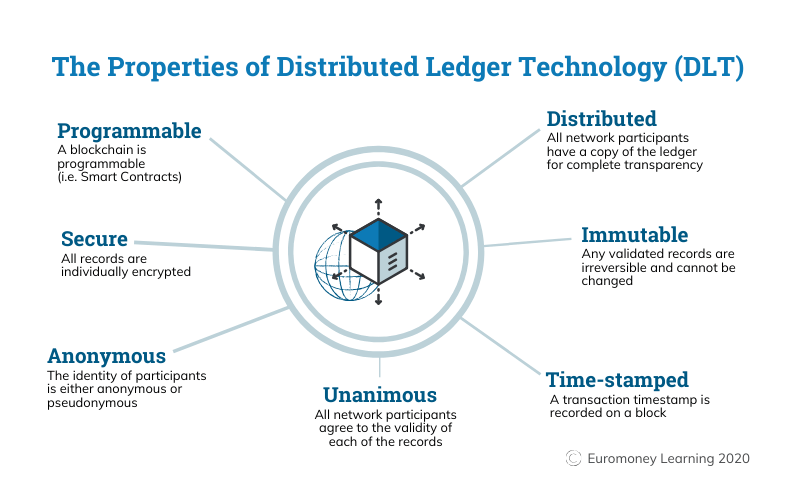
The properties of a distributed ledger technology (DLT) include:
- Distribution: All network participants always have an updated copy of the digital ledger for total transparency.
- Immutable: All validated records by the participants cannot be reversed, altered, or deleted. They exist as long as the network exists.
- Timestamp: Each transaction carries a timestamp of when it was processed; this is recorded on its block and is not subject to change, even by the participant who initiated the transaction.
- Programmable: the ability to automatically initiate some transactions when some predetermined conditions are met, called smart contracts.
- Anonymity: the identity of participants in the network is either anonymous or pseudo-anonymous, leaving out their sensitive data.
- Unanimous: All participants must agree to the validity of each block in the network.
How blockchain works
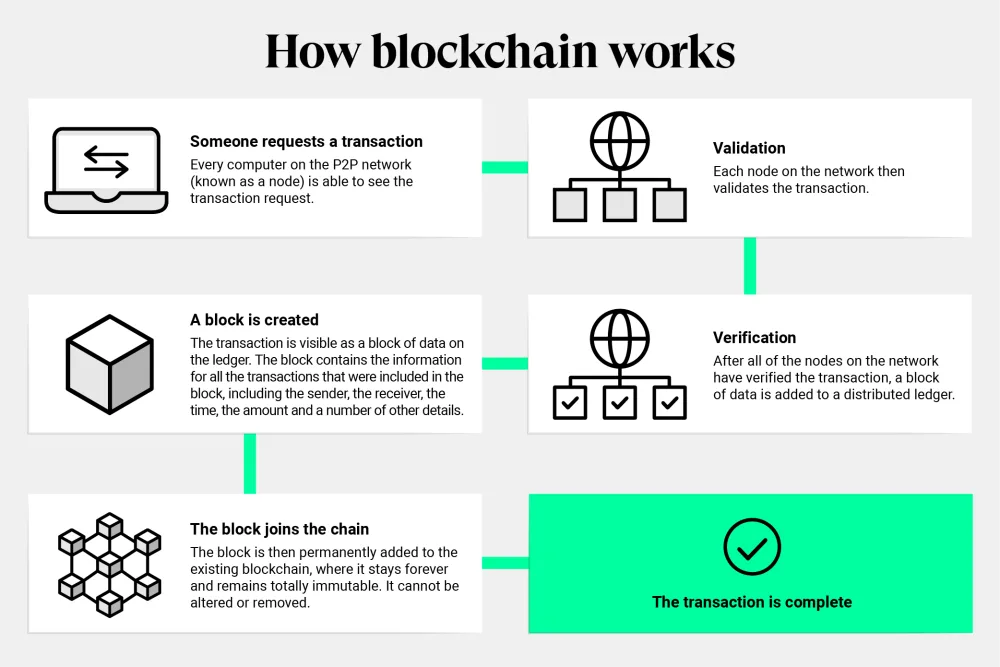
When a new transaction is initiated, a record of the transaction is duplicated and added to the digital ledger on the node of every participant in the network.
These nodes validate the transaction, creating a block in the process.
This new block now has a hash value and has been added to the blockchain.
The blocks are linked in chronological order and secured by cryptographic proofs.
Anytime a new transaction occurs, a new block is added and recorded on every participant’s ledger.
Hashing
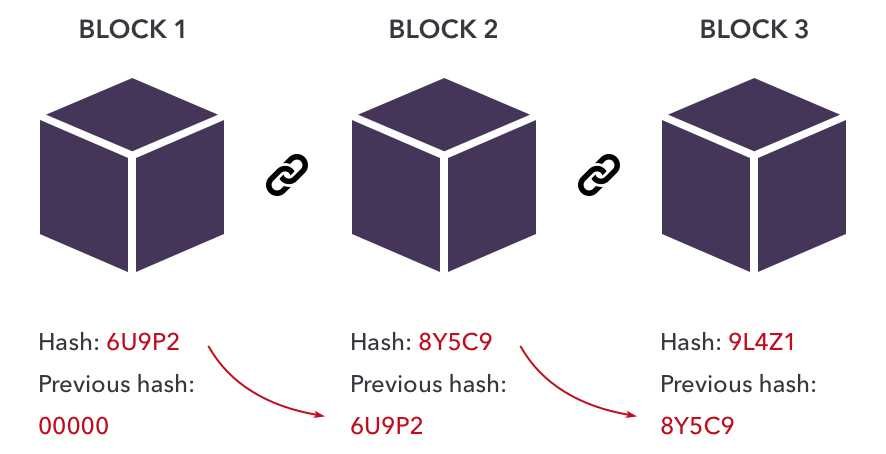
Hash functions are mathematical functions that make use of complex algorithms to convert a set of data of arbitrary length into a bit string of fixed size, also known as the “hash value.”
Every block accepted into the blockchain network has a unique identifier, a hash value that will change if the content of the block is altered.
These blocks are stored in chronological order, each referencing the preceding block.
A change in the data of one block would cause a succeeding block to identify a hash change, leading to the rejection of the altered block from the network.
Consensus mechanisms

Blockchain technology relies on consensus mechanisms to function and be trusted by users.
A consensus mechanism is a standardized way for the blockchain’s nodes to keep records of all transactions; this is essential as it prevents hackers from tricking the blockchain.
A good example is making the same transaction twice, i.e., double-spending, a term used about digital currencies where a user can use the same digital currency twice.
The two common mechanisms include Proof of Work and Proof of Stake.
- Proof-of-work Blockchains refer to nodes as miners; these miners compete to generate a random number to unlock the next block on the chain. The quickest miner to reach that number adds the next block and receives a block reward.
- Proof-of-Stake blockchains, on the other hand, require nodes, known as validators, to offer their coins as collateral for the chance to validate blocks. These blocks are finalized and added when a specific number of validators verify that the block is accurate.
Types of blockchain networks

1. Public networks
There is no central authority managing the blockchain.
Anyone can join and participate in the network; an example is the Bitcoin cryptocurrency.
Drawbacks might include the substantial computational power required, little or no privacy for transactions, and weak security.
A consensus algorithm is used for verifying information authenticity; proof of stake (PoS) and proof of work (PoW) are two frequently used consensus methods.
2. Private networks
These are decentralized peer-to-peer networks; however, the networks are controlled by an authority that decides who can participate in them.
They also maintain the shared digital ledger and execute a consensus protocol.
These blockchains are each managed by a single authority and operate on a closed network, making them the preferred option for private businesses and organizations.
3. Hybrid networks
These are essentially private blockchains that make room to accommodate external participants by providing them with an invitation or permission to join the network, usually with some restriction on what transactions they can partake in.
Public networks can also be permissioned.
4. Consortium networks
Unlike private and hybrid networks that are controlled by a single authority, consortium networks are managed by multiple authorities that determine who may submit transactions or access the data on the network.
These networks have both private and public components and are ideal for situations where all participants need to have a shared responsibility for the blockchain, e.g., collaborations among multiple organizations.
Blockchain and cloud computing
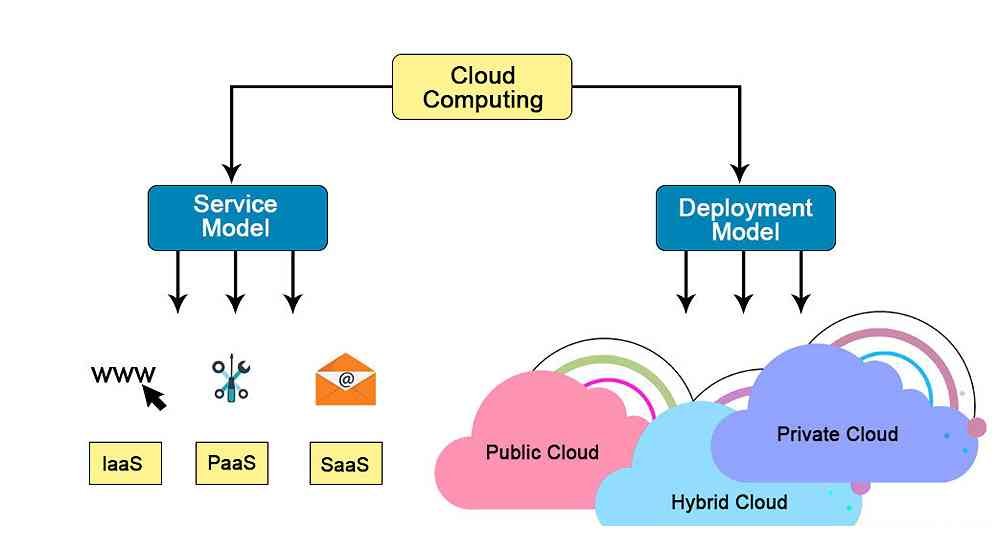
Cloud computing offers hardware and software infrastructure for organizations to develop, host, and run their applications remotely via the Internet.
These cloud platforms are offered by cloud service providers (CSPs) that make available the infrastructure, networking, and development tools needed to run applications in the cloud.
This way, organizations do not have to purchase expensive on-premises data infrastructure.
Blockchain-as-a-Service (BaaS) is an offering of common CSPs for organizations to build blockchain projects easily and quickly without having to invest in the underlying infrastructure—employing expensive blockchain developers, building an on-premises data center, coding blockchain projects from the ground up, etc.
BaaS helps spur enterprise adoption of blockchain technology by providing development tools to create blockchain projects.
Also, participants in a blockchain network can access other participant data and apply data operations, e.g., analytics, across the blockchain network.
This interoperability feature of blockchain is a huge asset, especially in industries like the healthcare industry.
Common CSPs that offer blockchain as a Service (BaaS) in their cloud platform include Amazon AWS, IBM, Oracle, Alibaba Cloud, etc.
Obisesan Damola
Damola is a medical doctor who has worked in the Nigerian healthcare industry for a little over 3 years in a number of primary, secondary, and tertiary hospitals. He is interested in and writes about how technology is helping to shape the healthcare industry. He graduated from the College of Medicine, University of Ibadan, the foremost medical training institution in Nigeria.



